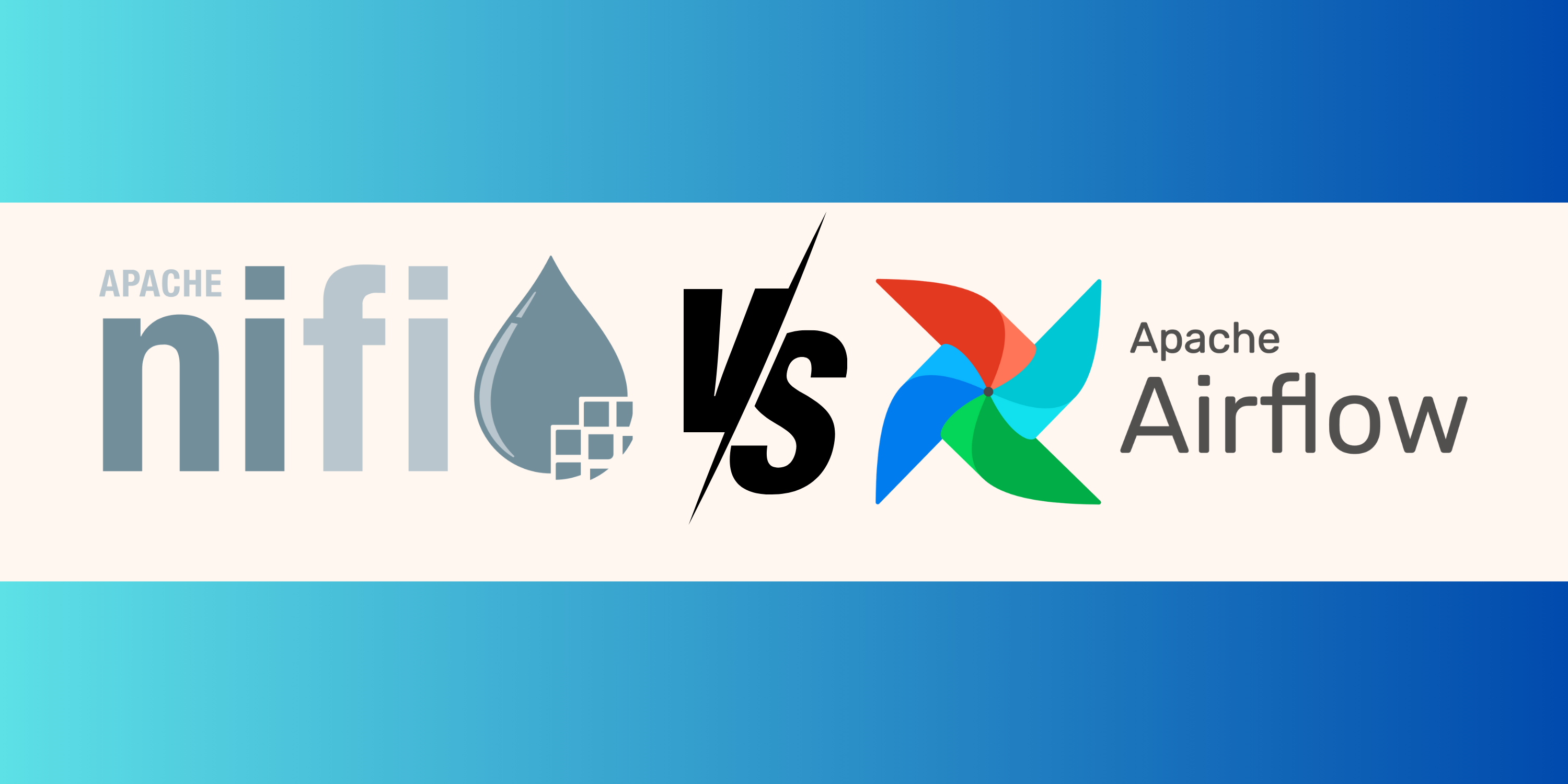
Data flow management is handled by the open-source projects Apache NiFi and Apache AirflowTM. A streaming platform called NiFi is used for the continuous and automatic dissemination, transformation, and intake of multimodal data. NiFi automates data pipelines for generative AI, event streams, cybersecurity, and observability. Airflow, on the other hand, coordinates intricate workflows and controls task dependencies. It is ideally suited for batch processing and ETL process management, with a focus on Python flexibility. In comparison to NiFi, Airflow requires more setup and configuration work and is less effective for real-time data transfers.
Apache Air Flow: What Is It?
An effective open-source ETL (Extract, Transform, Load) program for organizing, carrying out, and keeping track of several operations is called Airflow. With interoperability for major cloud providers like as GCP, Azure, and AWS, Airflow provides data processes with flexibility and scalability. It functions as a flexible task scheduler and data orchestrator that helps businesses with a variety of activities, such as API integrations, machine learning model training, system tracking, database backups, ETL/ELT processes, and more. Through the use of directed acyclic graphs (DAGs), Airflow streamlines the process of creating processes and offers intuitive command-line tools for handling intricate tasks. Utilizing worker infrastructure and a scheduler, Airflow effectively completes activities in accordance with predetermined standards.
| Apache Airflow | Apache NiFi |
| • The Python workflow automation tool Apache Airflow is free and open-source, and it can be used to build and maintain intricate data pipelines. Using Directed Acyclic Graphs (DAGs), Airflow controls, arranges, and maintains ETL pipelines. |
|
| • You can mix database operators and Airflow transfer operators to construct ETL pipelines. Since there is no Airflow operator to transfer data straight from Postgres to BigQuery, you must utilize a Google Cloud staging storage. | Data can be processed, validated, filtered, joined, divided, or altered by processors in the NiFi workflow. When those components exchange data in the form of FlowFiles via linked queues, the FlowFile Controller assists in managing the resources between them. |
| • The metadata may be easily retrieved with Airflow’s user-friendly interface. Schedules are easy to switch on and off, DAG status is visible, SQL queries can be executed, pipelines in use can be monitored, and any new issues may be promptly resolved. | The simple UI of Apache NiFi has advantages and disadvantages. It’s nothing special, yet it’s clear, uncomplicated, and lacking any extras. NiFi provides a very customizable web-based user interface. |
|
|
| • It lets users create data pipelines using fundamental Python functions, such as data time formats for scheduling and loops for job creation. Users may now construct data pipelines in the most dynamic way imaginable. |
|
| • If specific conditions are not met, Apache Airflow employs sensors to take over job execution. |
|
Apache NiFi: What Is It?
Niagara Files, another name for Apache NiFi, is a potent data integration solution that lets users control and automate data flow. It is made to effectively manage massive amounts of data and is developed in Java. With NiFi, users can process and distribute data in an easy-to-use yet sophisticated platform that enables them to build scalable directed graphs for data routing and transformation. As data moves through the system, users may filter, modify, join, divide, augment, and validate it with NiFi. If you don’t know how to code and need to combine data from several sources, Apache NiFi is a great option for you.
When processing massive amounts of data in batches or in real time, NiFi is very helpful. Numerous data sources, such as Hadoop, JDBC databases, messaging platforms like RabbitMQ, and many more, are supported for integration. Because of its adaptability, it may be used in a variety of data integration scenarios.
An Analytical Comparison of Airflow and Apache NiFi
Data engineers must be aware of the distinctions between NiFi and Airflow in order to select the best technology for their particular use cases.
Design of Workflow
With a highly interactive graphical user interface, Apache NiFi is built with data routing and transformation as its primary focus (GUI). It offers fine-grained control over data pathways and processing processes and is well-suited for automating data flow.
In contrast, Apache Airflow places a strong emphasis on programmable workflows, in which tasks are specified using Python code. A key component of Airflow’s architecture are Directed Acyclic Graphs (DAGs), which specify the sequence in which tasks are executed.
Examples
For applications involving real-time data delivery, processing, and intake, NiFi is perfect. When instantaneous data processing and data lineage are necessary, it performs exceptionally well.
Airflow is better suited for the planned execution of intricate workflows since it is designed for batch processing. While it may coordinate batch processing after data intake by systems like Apache Kafka, it is not intended for real-time streaming.
Which one should you use?
When it comes to workflow management, Apache NiFi and Apache Airflow have various functions. NiFi is perfect for real-time data processing since it is great at automating data flow and can easily handle complicated data routing, transformation, and system integration. Airflow, on the other hand, is made with a significant emphasis on job scheduling and dependency management and is intended for orchestrating complicated workflows, especially in data engineering and ETL procedures. Whichever one you choose—Nifi for data-driven automation and real-time processing, or Airflow for coordinating complex processes with obvious task dependencies—will rely on your unique requirements. In a larger data ecosystem, both technologies can be beneficial to one another.
Start Your Data Science course Career with Confidence! Exclr Solutions offers a Data Science course in Mumbai that combines theory with practical, hands-on training. Master the skills that top companies are searching for and jump-start your career. Enroll today and be part of the data revolution!
Name: ExcelR- Data Science, Data Analytics, Business Analytics Course Training Mumbai
Address: 304, 3rd Floor, Pratibha Building. Three Petrol pump, Lal Bahadur Shastri Rd, opposite Manas Tower, Pakhdi, Thane West, Thane, Maharashtra 400602
Phone Number: 09108238354











